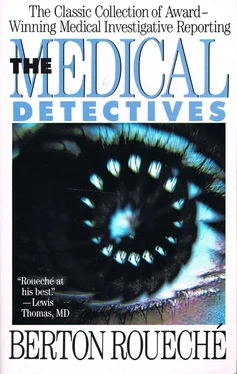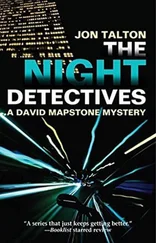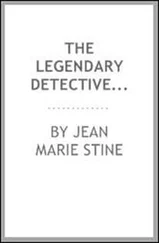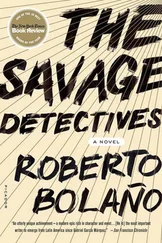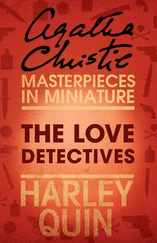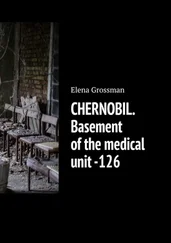History is rich in eruptions of mass hysteria. An outbreak was reported toward the end of the first Christian century by Plutarch. In "Mulierum Virtutes," one of his several philosophical works, he refers to a mass "mental upset and frenzy" among the young women of Miletus (a then important port on the Aegean coast of what is now Turkey), in which "there fell suddenly upon all of them a desire for death, and a mad impulse toward hanging." The toll, if any, is not recorded. More recently, in 1936, a similar desire for death fell upon the citizens of Budapest. Its victims, eighteen in all, were mesmerized admirers of a popular song called "Gloomy Sunday." Lugubrious in words and music, it is a cry of despair from a lover whose loved one has died. The lyrics, in English translation, read in part:
Gloomy is Sunday, with shadows I spend it all.
My heart and I have decided to end it all.
Soon there'll be candles and pray'rs that are sad, I know.
Let them not weep, let them know that I'm glad to go.
Suicide is not a common component of morbid mass behavior. In fact, death of any kind is a rarity in such outbreaks. The maniacal speculation in tulip bulbs that swept ruinously through Holland in the seventeenth century was a phenomenon of more classic construction. So were the Children's Crusade of the early thirteenth century and the successive waves of the dancing mania which broke over most of Europe a century and a half later. The Children's Crusade had its beginning in the summer of 1212, when some twenty thousand German and some thirty thousand French children, exalted by a sudden and contagious conviction that Christian love would succeed where Christian arms had failed in the recovery of the Holy Land, left their homes and set out in mile-long swarms for the East. It ended about a year later in Marseilles and several Italian ports, where differently inspired Christians rounded up most of the children and turned them into cash. The girls were thrust into brothels, and the boys were sold to agents of the Egyptian slave trade. The dancing mania is usually taken to have been an overreaction to the abatement of the protracted terrors of the Black Death in the mid-fourteenth century. "As early as 1374," Ralph H. Major, in his "History of Medicine," notes, "large crowds of men and women, obsessed by a strange mania, appeared on the streets of Aachen. Forming circles, hand in hand, they danced around in wild delirium for hours and hours, quite oblivious to the jeers and taunts of the onlookers. From Aachen the malady spread to Liege, then to Utrecht, Cologne, and Metz. The bands of dancers moved from town to town, finding everywhere new recruits to swell their numbers." The nineteenth-century historian J. F. K. Hecker, in his "Epidemics of the Middle Ages," adds, "Where the disease was fully developed, the attacks were ushered in with epileptiform seizures. The afflicted fell to the ground unconscious, foaming from the mouth and struggling for breath, but after a time of rest they got up and began dancing with still greater impetus and renewed vigor. . . . Music appeared to be the sole means of combatting this strange epidemic. . . . Soft, calm harmonies, graduated from fast to slow, proved efficacious as a cure." The frenetic folk dance of southern Italy called the tarantella is widely thought to be a relic of that terpsichorean marathon.
Eruptions of epidemic hysteria in the modern world, though numerous, have tended to be more modest in size. They have also, like the 1973 outbreak in Berry, Alabama, which led Dr. Nitzkin to suspect the nature of the episode at the Bay Harbor school, tended to occur in schools or other closed communities, and to conceal their functional origin behind a mask of organic illness.
Dr. Nitzkin turned away from the winter window. He sat on the edge of his desk and crossed his legs. He reached down and scratched a distant ankle. He raised his head and smiled. "The trouble at Berry was a little unusual," he said. His smile widened. "It was a pruritus—an itchy rash." His smile faded. "But it was otherwise very seriously typical. It was a small disaster. It went on and on. The outbreak began on a Friday, there was a recurrence on Tuesday, and another the following Friday. At that point, the school board closed the school for the remainder of the term. A diagnosis of mass hysteria is largely a matter of exclusion. The investigators at Berry seem to have suspected hysteria pretty early, but they weren't able to convince the community that they had excluded all possibility of an organic cause. Hysteria is self-perpetuating. It doesn't just run its course. It must be promptly recognized and acted upon, or it will go on and on and get worse and worse. Well, I recognized it here. I was sure of that. I trusted DiSalvo's professionalism and plain good sense, and I was sure of my own clinical judgment. So it was up to me to act. But I was critically aware that I was taking a chance. The decision to close the school or allow it to stay open was no small thing. I looked around the room, and spotted a little group at the far end. I recognized the head secretary and two or three school-board people and somebody from the town council. That was the place to start. I went over, and they saw me coming. My height has its advantages. And I guess I looked decisive. I said I had an announcement to make, and they gave me their attention. I said that our Health Department investigation had eliminated the possibility of any toxic gas. I said there was also no evidence of any infectious disease. I called their attention to the hyperventilating kids. By that time, our little circle had grown. Some of the teachers drifted over, and some of the fire-rescue squad, and some of the police, and some parents, and some of the kids themselves. And, of course, the press. All of a sudden, I was talking into microphones, and flashbulbs were popping, and the television cameras were zooming in. I tell you, it was chilling. I had to believe I knew what I was doing. I took a deep breath, and said that it wasn't an outbreak of gas poisoning or any other kind of poisoning. It was an outbreak of hysteria—mass hysteria. I said I didn't know just how it had started, but I knew how to stop it. I said the only way to bring it under control was to get things back to normal. I asked that the cafetorium be cleared, so the kitchen staff could set it up for lunch. I asked that the children out on the school grounds be brought back into the building and sent to their classrooms. And the time to do it, I said, was now— right this minute.
"Then I held my breath. Nobody tried to challenge me or contradict me. Nobody said a word. But you should have seen their faces. The public-health nurses looked stunned. I saw Dr. Enriquez smiling and nodding. The parents of the sick children looked horrified and insulted—I was telling them their children were crazy. But most of the others—the teachers and the school-board people and the firemen and the head secretary—just stood there looking thoughtful. The truth was dawning. I think that maybe some of them had half suspected the truth all along. Well, I started in all over again. I gave them my reasons and my reasoning. I could see heads beginning to nod and faces starting to relax. And then, all of a sudden, the tension dissolved. The firemen and the police just sort of disappeared. People began to turn to each other and talk. The sick kids stopped looking so sick. The head secretary went out to the kitchen, and the teachers began to clear the room. It was all over.
"I mean, the emergency was over. There was still plenty of work to do. I still had to justify my decision—and not only to the school and the public. I had to explain it to the satisfaction of my office. I had made a bold move, and bold moves are not encouraged in the bureaucratic world. I had some very angry calls from parents. One mother demanded that I apologize to her child. I was finally able to convince her that being suggestible at the age of eleven was not a sign of insanity. But, thank God, I was lucky. The proof was forthcoming. I acquired one useful piece of information even before I left the cafetorium. A teacher came up to me at the end of my speech and said she was sure I was right. She said there could not have been any poison gas or fumes in the cafetorium, because when the first rehearsal class let out, and the first wave of illness broke, a second rehearsal class had marched into the cafetorium and spent the hour rehearsing, and none of the children in that class had been taken ill. So, gas or no gas, the cafetorium could not have been the site of the trouble. But it was in the cafetorium that the first victim—the girl I'm calling Sandy—took sick. How come?
Читать дальше
